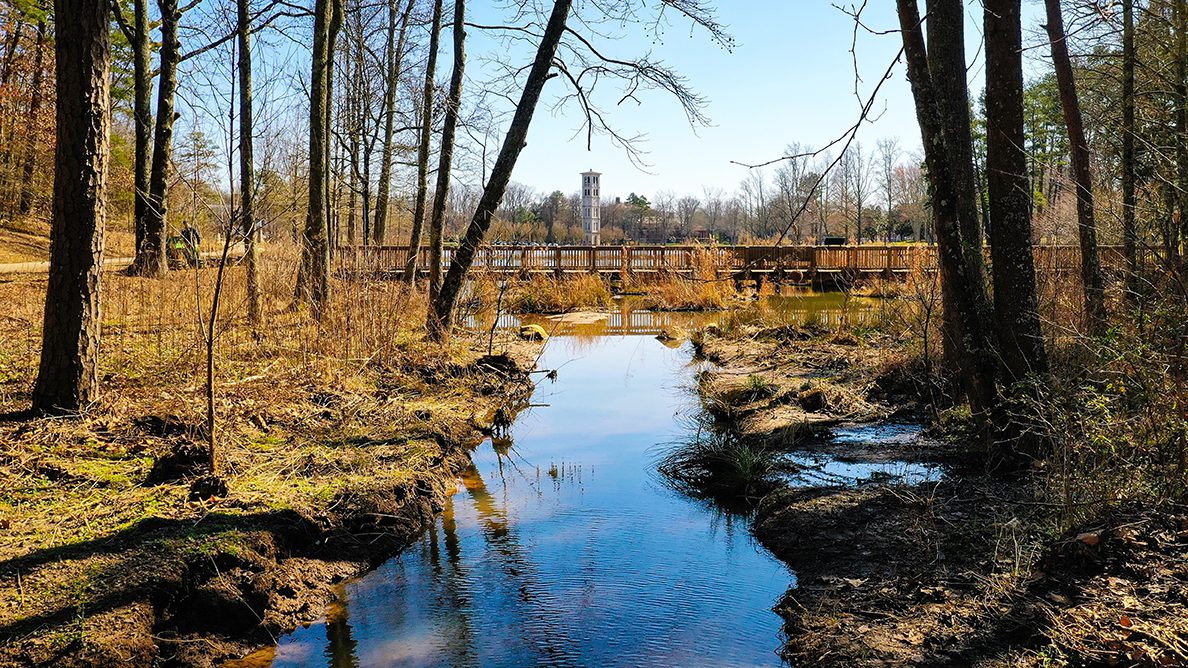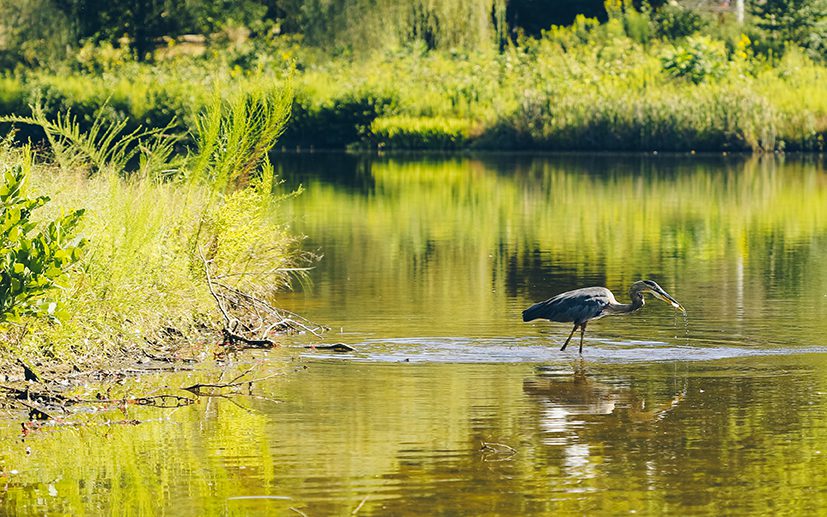Furman Lake restoration project slated to begin later this month

If left to its own devices Furman Lake would quietly disappear, fading back into the two streams that created it when they were dammed in the 1950s. That’s why Furman is set to embark on a lake restoration project beginning later this month.
Work was initially slated to begin in March before being postponed because of the COVID-19 pandemic.
“When you slow water down, particulates that are contained in those streams – mud and silt – fall out of suspension, and that then accumulates. The depth gets shallower and shallower and shallower,” Furman Professor of Biology Wade Worthen said. “If you want a lake there, you have to dredge that out. Otherwise the natural progression is the lake will fill up with sediment, and the water will return to the shape of a stream.”
Scot Sherman, Furman’s director of landscape and construction, estimates the dredging will take at least two months, during which time machinery set up by the Greenville-based firm 3R Industrial and Environmental Contractors will be a constant presence on the water and a portion of the 1.6-mile Furman Lake Trail will also be closed.
“You’ll see piping coming from the dredge machines,” he said. “For several weeks the path will be blocked, but we don’t know exactly how long.”
Unlike a previous, and largely unsuccessful, effort to dredge the lake in 2006 by scooping out the silt, this time water levels won’t be lowered to expose the bed. Instead, a “Dino6” dredge will work on the surface, pulling up debris churned from the bottom by a rotating cutting bar and pumping it into “Geotubes” on shore, which will trap the solid particles while letting the liquid escape.

A great blue heron looks for food in Furman Lake. The heron is one of many native species the lake’s ecosystem supports.
Ninety percent of the lake is less than 6 feet deep, and the goal is to lower the water temperature by increasing the depth. Removing the buildup of organic material and other excess nutrients should also increase oxygen levels and suppress algae growth.
Algae blooms, fed by phosphorous runoff, have been an ongoing problem requiring chemical control. In addition to blocking sunlight from reaching aquatic plants fish rely on for shelter and food, when the algae die an explosion of bacteria pulls dissolved oxygen from the water as they feed on the organic matter, which can suffocate fish. Some species of bacteria that feed on the algae may also release neurotoxins.
Work will focus on the areas where the streams feed into the lake on each side of the Bell Tower peninsula, where in some places the water is barely a foot deep. One enters from the picnic shelter and the other from the Asian Garden.
“Algae grows in those shallow areas, and it’s tough to deal with,” Sherman said, estimating at least 15,000 cubic yards of sediment – enough to bury a football field 9 feet deep – will be removed and deposited in an area on the far side of the lake.
The previous dredging attempt was part of the Lake Restoration Project, established in 2006 to address the declining quality of the water that had resulted in most recreational activities being prohibited because of health concerns. Crews attempted to haul the sediment away from campus in dump trucks, but in addition to being unsightly and smelling bad, the process was time-consuming and ultimately didn’t work.
“This is the right way to do it. It contains the mess, the slurry,” Sherman said. “Physically, it’s just an easier way to deal with the wet soil.”
Worthen is a community ecologist who was part of the restoration project. Based on its recommendations, Furman implemented a number of changes to how it managed the lake, including no longer maintaining and mowing turf grass to the water’s edge, planting native vegetation along the shoreline, installing buffers to filter runoff and reducing the water fowl population.
The result has been much improved water quality and a more diverse and healthier ecosystem. Respect for that ecosystem will be taken into account while dredging.
“The sediment is more than just dirt – it is a biological community that is part of this system that is functioning,” Worthen said. “The plan is to maintain some of those areas that have silted in the bays, right by where the streams come into the lake, and actually create wetlands there.”
In 2018, the U.S. Board of Geographic Names approved a proposal to officially change the name of the lake from Swan Lake to Furman Lake. The change has been made in the Geographic Names Information System, the nation’s official geographic names repository.